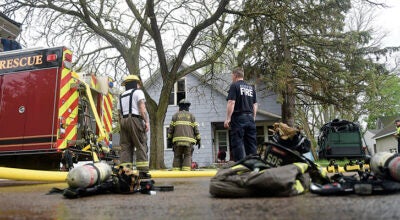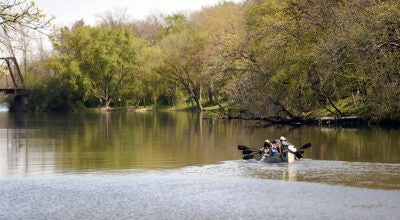Mower County Health’s nursing service keeps busy
Published 10:05 am Tuesday, April 28, 2009
Approximately 37,100 people visited the Mower County Public Health Nursing Service for one reason or another in 2008.
“It was,” Margene Gunderson said, “ a very busy year for Public Health.”
The county’s community health services director documented the PHNS contacts in her annual Program Activity Summary presented to the Mower County Board of Commissioners.
Gunderson and her PHNS staff have large responsibilities.
They must assure an adequate local public health infrastructure is in place.
They must promote health communities and healthy behaviors.
They must prevent the spread of infectious diseases.
They must protect against environmental health hazards.
An area of continually enlarging responsibility for PHNS is to prepare for and respond to disasters and to assist communities in recovery.
Most of all, PHNS must do what they can to assure the quality and accessibility of health services.
According to Gunderson, all areas are important.
Under the category of “Family Health” are no less than nine separate, but equally important services: Prenatal classes, early childhood screening, child and teen checkups, post-partum depression screening, child passenger safety, fluoride varnish, Follow Along Program, bucal swabs and blood pressure clinics.
Disaster prevention and control is another all-encompassing area.
Immunizations, bloodborne pathogen training, lead screening, tuberculoin testing, perinatal hepatitis “B” surveillance, tobacco use prevention, jail health and immunizations improvement practice.
There is also the Minnesota Senior Health Options and Senior Care Plus programs.
Women, Infants, Children (WIC), too.
“We take care of everyone, infants to adults, senior citizens, too,” Gunderson said.
The “Baby Think It Over” program is offered high school freshmen and sophomores.
The Family Services Collaborative reaches out to all school districts in Mower County in attempting to strengthen families.
The federally-funded WIC program is an example why Gunderson called 2008 a “busy year.”
Each month 1,557 cases were managed by PHNS, according to Gunderson’s summary.
On average, $96,967 was redeemed in WIC vouchers each month of 2008.
The WIC clinic is open 2 1/2 days weekly and clients are limited to 30-minute increments.
So busy are the WIC staffers, that a certified professional authority staffer was added to see walk-ins and high-risk participants in the program.
Gunderson said it is important to keep the county commissioners abreast of the PHNS.
It’s also important, she said, to keep the public educated and informed.
For instance, sharing information abut the highly-popular WIC program.
“It’s a supplementary program designed to help as many eligible people as possible. It’s not a poverty program,” she said.
Gunderson’s appreciation for the void WIC helps fill is understandable, when the 2008 Activity Summary is reviewed.
“Last year, we served more families than any other group,” she said. “They were families with infants and children who needed a variety of our services.”
Healthy Beginnings is a companion program to many others offered by PHNS with a harder edge than others. It is an early intervention, child abuse prevention program targeting all families with newborns and including families with children up to 5 years of age.
Last year, 226 mothers and 234 babies were seen during home visits by PHNS nurses. There were also 39 return visits made to follow-up on initial concerns.
According to Gunderson, the numbers of contracts and people served has remained relatively stable, but she expects that to change if the economy worsens and more people seek help.
If there is a growth area, it could be in the area that resembles “homeland security issues.”
Under the umbrella title of “Public Health Preparedness/Pandemic Flu Planning, the “new” focus of traditional public health emergencies.
One possible starting point may have been following the flood of 2000 and its successor in 2004, when the Austin Area Interfaith Disaster Response Group was created.
The PHNS is part of a group effort to help families with unmet needs after a disaster occurs.
Not only does Mower County PHNS take care of senior citizens, teens, children and babies, but it has become a leader is disaster response planning; both for the Mower County work force and for all county residents.
“This is an area that we will need to take another look at in the future,” Gunderson said.
“We’re going to have to look at all our priorities, but disaster planning will certainly be among them.”
Gunderson said she believes the new Mower County Medical Emergency Response Registry, which seeks to accumulate a list of trained volunteers who can lend their skills to the public in times of emergencies.
“We need to populate that registry as soon as possible,” Gunderson said.
Immunizations, HIV/AIDS awareness, Sudden Infant Death Syndrome, paternity testing, handwashing campaign, managing outbreaks of neurological disorders and conjunctivitis … Public Health Nursing Service’s responsibilities grows.
“We’re not at full staff right now,” said Gunderson. “That’s always a challenge for us.”
“The county board is aware of this and, I think, has done a good job keeping on top of how our needs are growing with society’s.”
“I would give my kudos to the commissioners and to the Public Health staff. They’re all working for the same goal.”
In the case of Public Health Nursing Services, that mission is to protect and promote good health for all.





